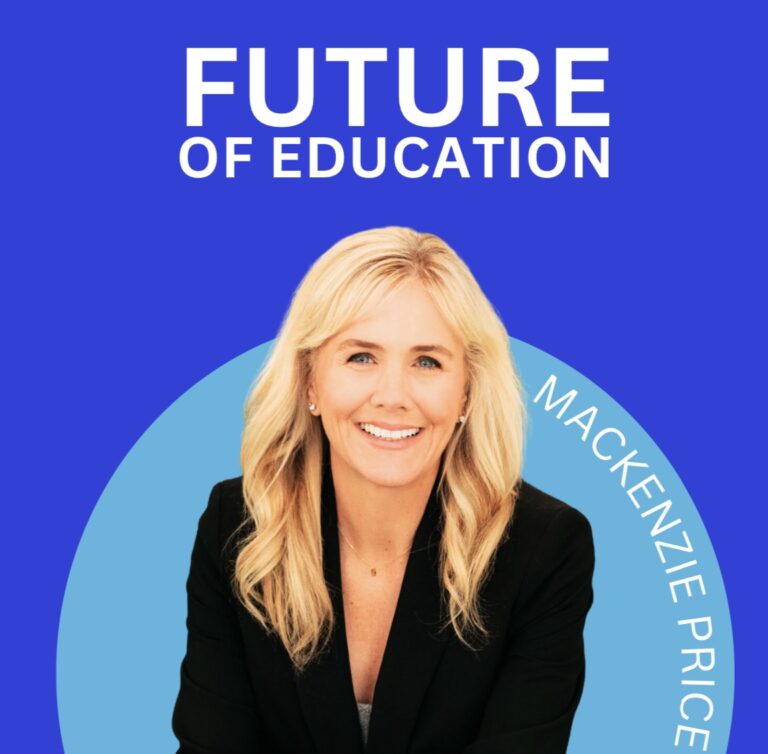Charter School Challenges & Triumphs — Peter Bezanson // BASIS Educational Ventures
- ### Episode Classification Middle School
- - **Episode Classification: Blended Learning**
- Based on the content of the transcript, the podcast episode can be classified as "Charter School".
- Education Reform
Peter Bezanson
BASIS Educational Ventures

- Part 1How the BASIS Model is revolutionizing education — Peter Bezanson // BASIS Educational Ventures
- Part 2 Charter School Challenges & Triumphs — Peter Bezanson // BASIS Educational Ventures
Show Notes
-
01:16How charter schools differ from traditional public schoolsCharter schools like BASIS are chosen by students and their families based on the school's unique offerings. Unlike traditional public schools, charter schools can offer an above grade level curriculum, resulting in distinct academic outcomes compared to traditional public schools.
-
04:01Charter schools and public fundingCharter schools receive less public funding per pupil in comparison to traditional district schools. The funding disparity is driven by charter schools inability to access local property tax money and limited facility funding.
-
06:05Charter schools and the value of philanthropic partnersCharter schools have significant special needs and underserved populations. For charter schools to continue to serve these at-risk students, philanthropic support is crucial as federal and state funding are typically far less than the cost to educate these students.
-
08:23Flexibility in staffing at charter schoolsUnlike traditional public schools, charter schools are not obligated to hire certified teachers. This allows them to bring in subject experts with advanced degrees in the relevant fields, a key factor contributing to the success of high-performing charter schools.
-
09:56The challenge of securing facilities for charter schoolsThe primary obstacle to charter school expansion is the challenge of securing facilities. Rising commercial real estate costs, increased interest rates, construction expenses, and the unwillingness to rent unused district school buildings to charter schools make growth difficult.
-
12:03Public school system support for charter schoolsCharter schools diminish public school student counts, impacting their business model and resources. While Washington DC has regulated a balance between charter and district schools, in-district charter schools havent had much success or longevity.
Quotes
-
"The federal and state funding provided to a charter school to serve a student with a disability tends to be less significantly than the amount it costs to educate that student." - Peter Bezanson
-
"Each charter school ends up being a school for students who choose it because of who it is." - Peter Bezanson
-
"The freedom to hire non-certified teachers is essential for the success of high performing charter schools." - Peter Bezanson
-
"The average school that a charter builds is probably $25 to $40 million. So, the biggest impediment to growth is the lack of facilities. " - Peter Bezanson." - Peter Bezanson
-
"Washington DC made a decision that they want about 50% of their schools to be charters and 50% to be districts." - Peter Bezanson
- Part 1How the BASIS Model is revolutionizing education — Peter Bezanson // BASIS Educational Ventures
- Part 2 Charter School Challenges & Triumphs — Peter Bezanson // BASIS Educational Ventures
Up Next:
-
Part 1How the BASIS Model is revolutionizing education — Peter Bezanson // BASIS Educational Ventures
Peter Bezanson, Co-Chairman and CEO at BASIS Educational Ventures, delves into the BASIS Model’s transformation of charter school education. Since its inception as a single school in Tucson in 1998, BASIS has expanded to 40 charter schools across Arizona, Texas, Louisiana, and Washington DC. Despite criticism for a test-heavy culture, BASIS high schools consistently rank in the top 10, 15, and 20 of the US News & World Report. Today, Peter discusses how the BASIS Model is revolutionizing education.
Play Podcast -
Part 2Charter School Challenges & Triumphs — Peter Bezanson // BASIS Educational Ventures
Peter Bezanson, Co-Chairman and CEO at BASIS Educational Ventures, delves into the BASIS Model’s transformation of charter school education. Charter schools are publicly funded but operate independently and with more flexibility in curriculum than public schools. While they receive public funding, charter schools also have to rely on philanthropic support, as they receive less per-pupil funding than traditional public schools. Today, Peter discusses charter school challenges and triumphs.



